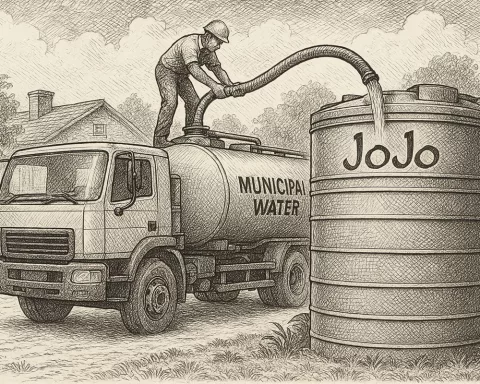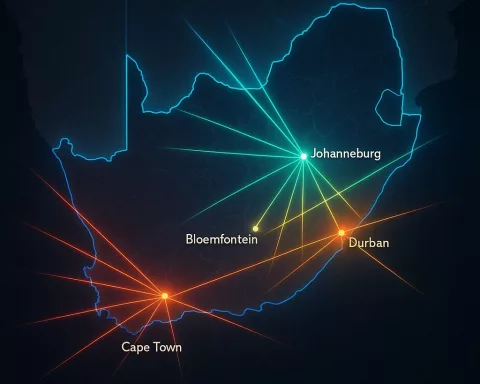The South African National Petroleum Company (SANPC) is set to launch on April 1, 2025, bringing together PetroSA, iGas, and the Strategic Fuel Fund to manage energy better. This new company aims to boost jobs, improve energy security, and help South Africa grow economically. As the country transforms its energy sector, SANPC symbolizes a fresh start, focusing on using natural resources wisely. With the right planning and teamwork, SANPC hopes to create a brighter future for all South Africans.
What is the South African National Petroleum Company (SANPC)?
The South African National Petroleum Company (SANPC), launching on April 1, 2025, consolidates PetroSA, iGas, and the Strategic Fuel Fund to enhance energy management and efficiency. This initiative aims to support economic growth, improve energy security, and foster job creation in South Africa’s energy sector.
A New Era in Energy Management
South Africa is on the brink of a significant transformation in its energy sector with the forthcoming launch of the South African National Petroleum Company (SANPC). Scheduled to start operations on April 1, 2025, this initiative is a crucial step in enhancing the efficiency and effectiveness of the nation’s state-owned enterprises. SANPC is not just a structural reorganization; it symbolizes a fundamental shift in how South Africa plans to leverage its rich mineral and petroleum resources for sustainable economic expansion.
In 2020, during his State of the Nation Address, President Cyril Ramaphosa outlined the government’s strategic vision to revamp and streamline state-owned enterprises. This vision is aimed at strengthening the country’s economic infrastructure by optimizing the performance of these entities, thereby supporting national growth. The announcement set off a wave of reforms designed to transform the energy sector in South Africa, marking a new chapter in the nation’s approach to energy management.
The Portfolio Committee on Mineral and Petroleum Resources has praised the progress made in establishing SANPC. The merger process involved the integration of PetroSA, iGas, and the Strategic Fuel Fund (SFF) under a single umbrella organization. This consolidation, managed by the Central Energy Fund Group—a diversified energy company reporting to the Department of Mineral and Petroleum Resources—represents a critical phase in SANPC’s development. This strategic alignment ensures that energy policies are consistently applied to meet national objectives.
Workforce and Asset Management: Key Challenges
A major milestone in the formation of SANPC was the signing of a memorandum of understanding to facilitate the smooth transition of employees from PetroSA, iGas, and SFF. The involvement of human capital is essential for driving change and achieving organizational goals. Committee Chairperson Mr. Mikateko Mahlaule highlighted the importance of securing employee engagement, as they are pivotal in executing the company’s vision and objectives.
Concerns have been raised by the committee regarding the process of transferring assets from PetroSA, iGas, and SFF to SANPC. One of the primary challenges involves categorizing assets into viable and non-viable segments. The committee is against leaving behind non-viable assets for future management, as this could hinder the merger’s aim of eliminating duplicated mandates and maximizing resource use.
Chairperson Mahlaule pointed out the risks of isolating non-viable assets, which could necessitate forming a specialized team to manage them. This could distract from the primary goal of integrating operations and optimizing SANPC’s functionality. The focus needs to remain on ensuring a smooth transition and successful integration of resources under SANPC’s management.
Lessons from History and Global Practices
The consolidation of state-owned enterprises is historically complex and often involves overcoming significant obstacles. Integrating diverse organizational cultures, operational procedures, and strategic goals requires careful planning and execution. The SANPC initiative mirrors global efforts where countries have streamlined operations to boost productivity and economic gains.
The SANPC initiative can be compared to the Renaissance, a period marked by the revival of classical knowledge and the blending of different disciplines to achieve harmony. Similarly, SANPC seeks to bring together various entities within the energy sector to harness their collective strengths, fostering innovation and efficiency. This strategy not only promises economic benefits but also aligns with the international shift toward sustainable resource management.
Furthermore, the creation of SANPC is central to South Africa’s strategy for energy security. By consolidating key players in the petroleum sector, the company aims to improve the country’s ability to manage its energy demands efficiently. This approach aligns with global best practices, demonstrating resilience and adaptability in the ever-changing global energy markets.
A Pathway to Economic Growth and Development
The establishment of SANPC is expected to play a significant role in creating jobs and boosting skills development within the energy industry. As the company evolves, it will likely nurture an environment that encourages innovation and skill enhancement, contributing to the country’s broader socio-economic development goals. This aligns with South Africa’s comprehensive development objectives, emphasizing the importance of leveraging natural resources for economic growth and improving citizens’ quality of life.
In summary, the creation of the South African National Petroleum Company marks a crucial moment in the evolution of the nation’s energy sector. It represents a strategic effort to streamline operations, optimize resource utilization, and bolster energy security. Despite existing challenges, particularly in asset management, the progress achieved thus far demonstrates a commitment to reform and innovation. As South Africa embarks on this transformative journey, SANPC stands as a symbol of potential, ready to redefine the country’s energy landscape and contribute significantly to national growth and development aspirations.
“`markdown
What is the South African National Petroleum Company (SANPC)?
The South African National Petroleum Company (SANPC) is a new entity launching on April 1, 2025, which will consolidate PetroSA, iGas, and the Strategic Fuel Fund. Its purpose is to enhance energy management and efficiency in South Africa, supporting economic growth, improving energy security, and creating jobs.
Why was SANPC created?
SANPC was established as part of the South African government’s strategic vision to revamp state-owned enterprises. This initiative aims to strengthen the country’s economic infrastructure by optimizing the performance of these entities, thereby facilitating national growth and addressing energy sector challenges.
How will SANPC impact job creation?
The formation of SANPC is expected to generate new job opportunities and promote skills development within the energy industry. By nurturing an environment conducive to innovation, SANPC aims to contribute to broader socio-economic development goals, enhancing the quality of life for South Africans.
What are the main challenges SANPC faces during its establishment?
One of the primary challenges SANPC faces is the proper categorization and management of assets being transferred from PetroSA, iGas, and SFF. Ensuring a smooth transition and integrating operations without leaving behind non-viable assets is crucial for maximizing resource utilization and achieving SANPC’s objectives.
How does SANPC align with global energy practices?
The creation of SANPC mirrors global practices where nations streamline state-owned enterprises to boost productivity and economic gains. By consolidating key players in the petroleum sector, SANPC aims to improve South Africa’s capacity to manage energy demands efficiently, aligning with best practices for sustainable resource management.
What is the expected outcome of SANPC for South Africa’s energy landscape?
The establishment of SANPC is poised to transform South Africa’s energy sector by optimizing operations, enhancing energy security, and fostering economic growth. With careful planning and execution, SANPC aims to redefine the country’s energy landscape, contributing significantly to national development aspirations and the sustainable use of natural resources.
“`












